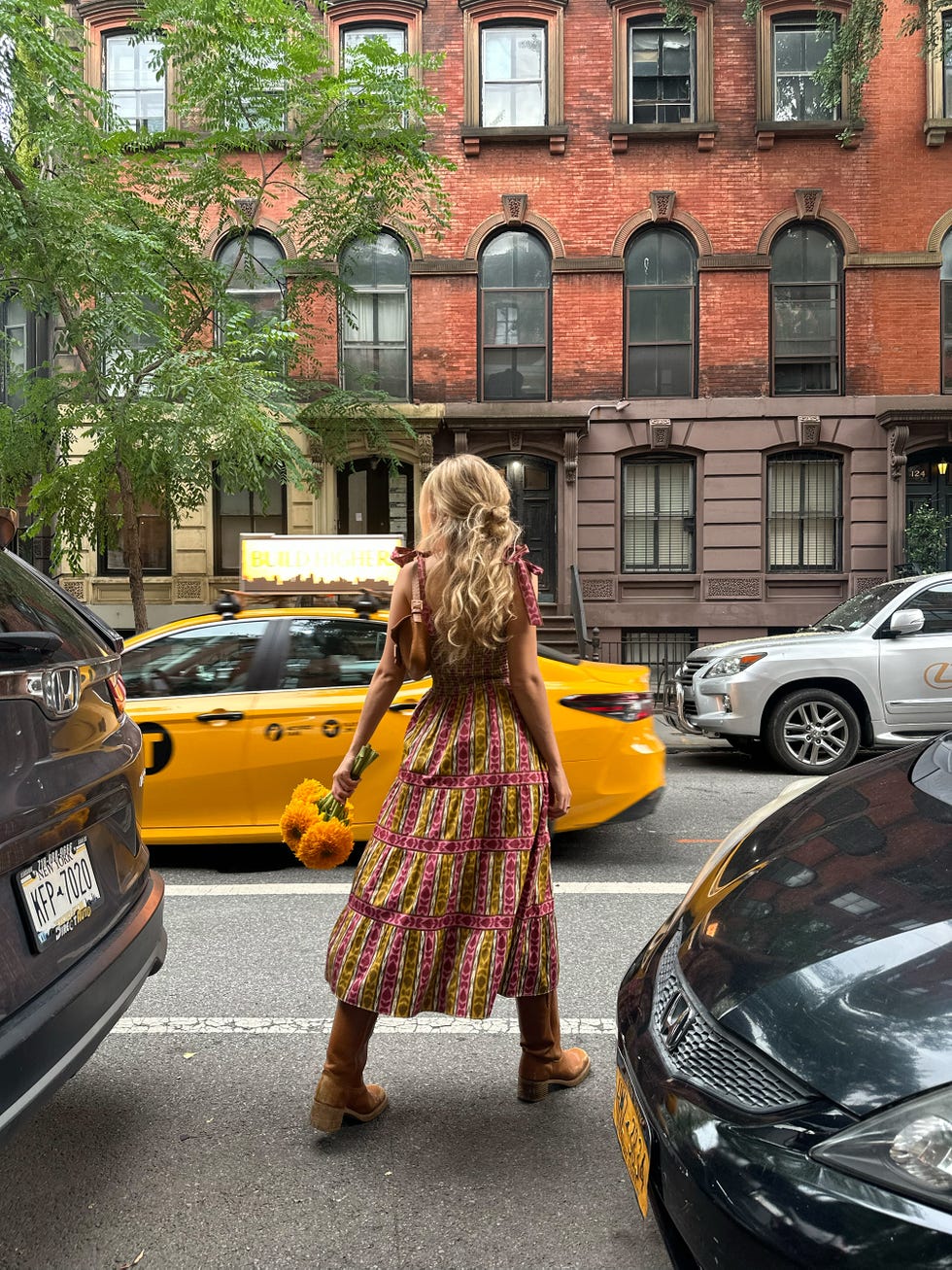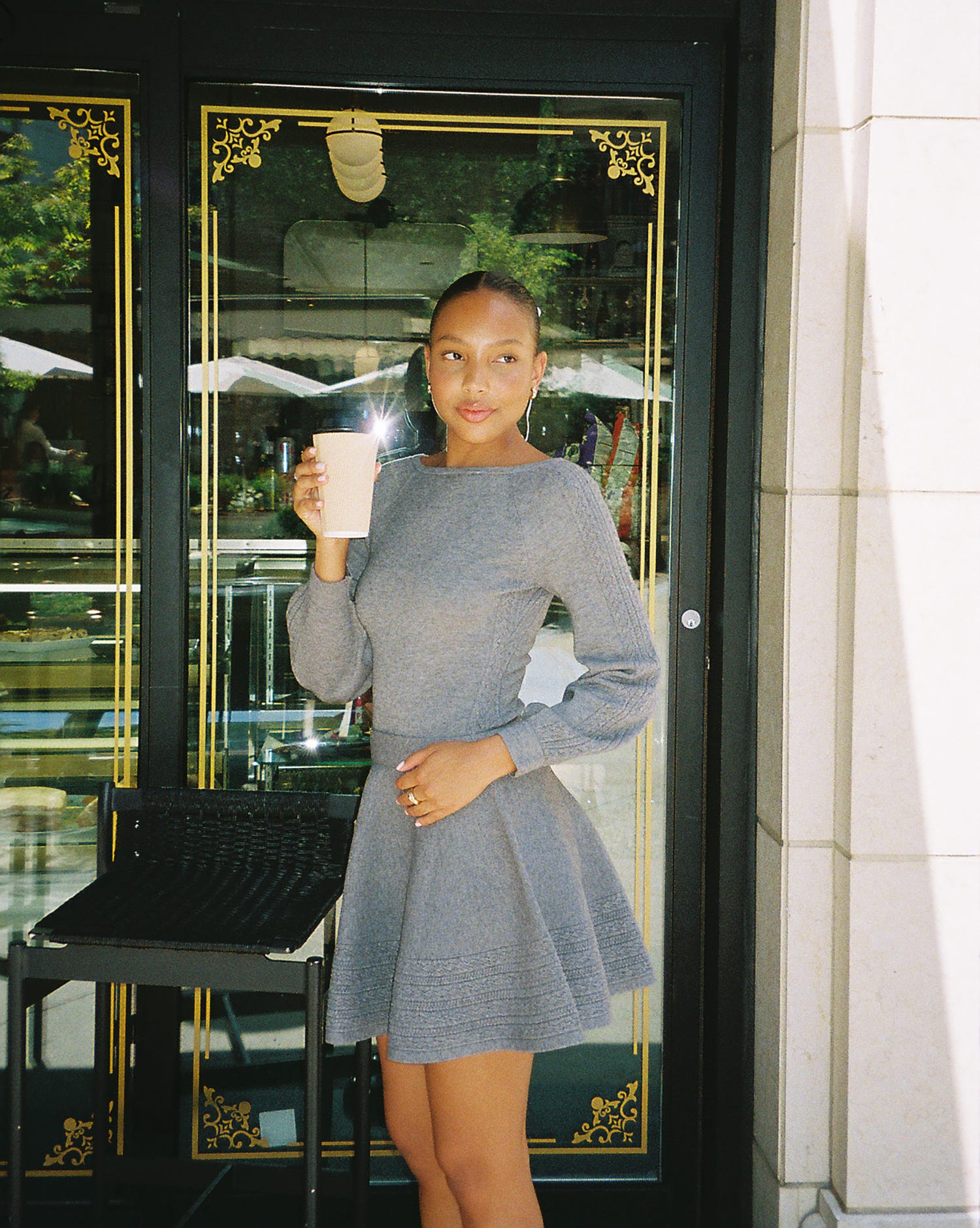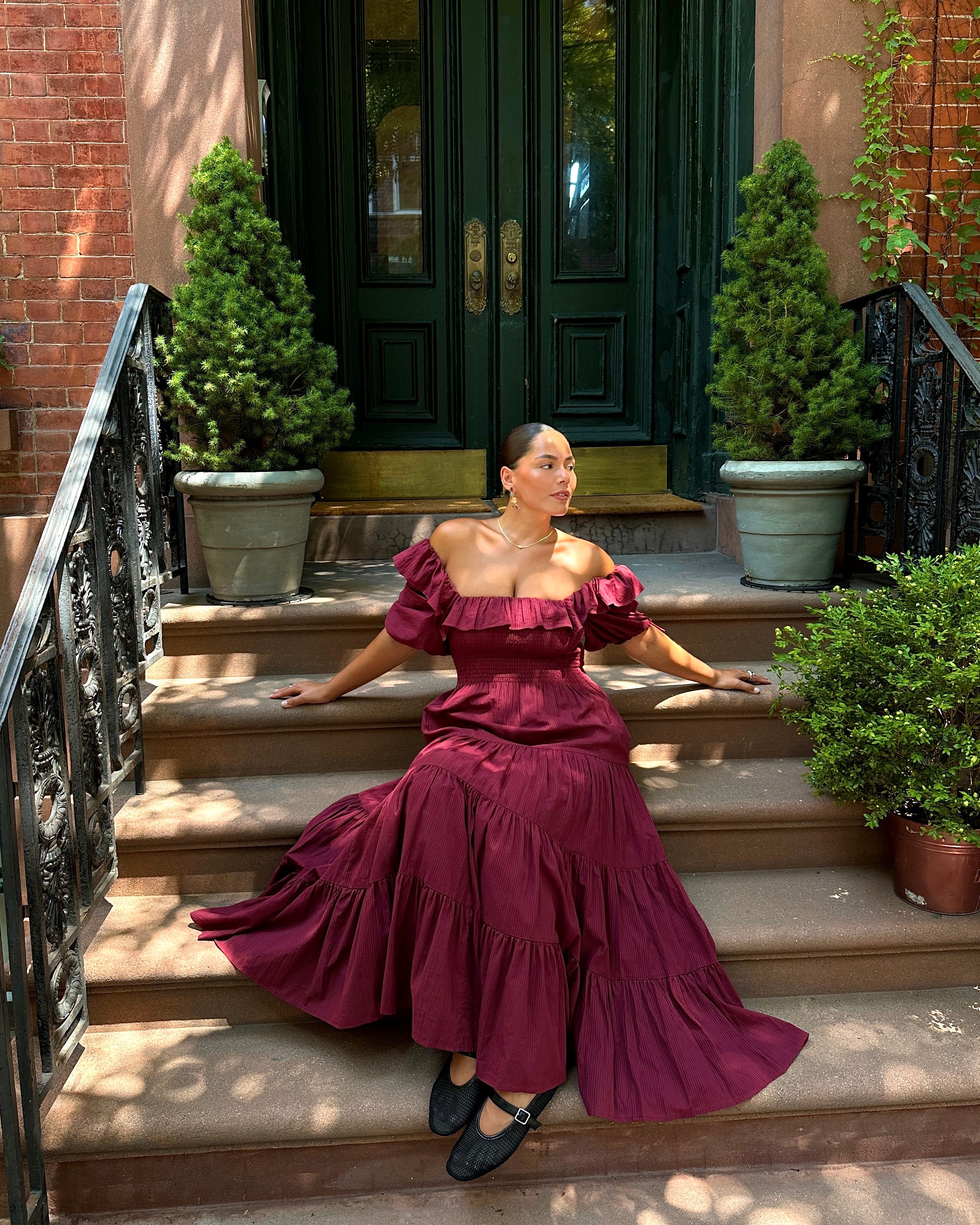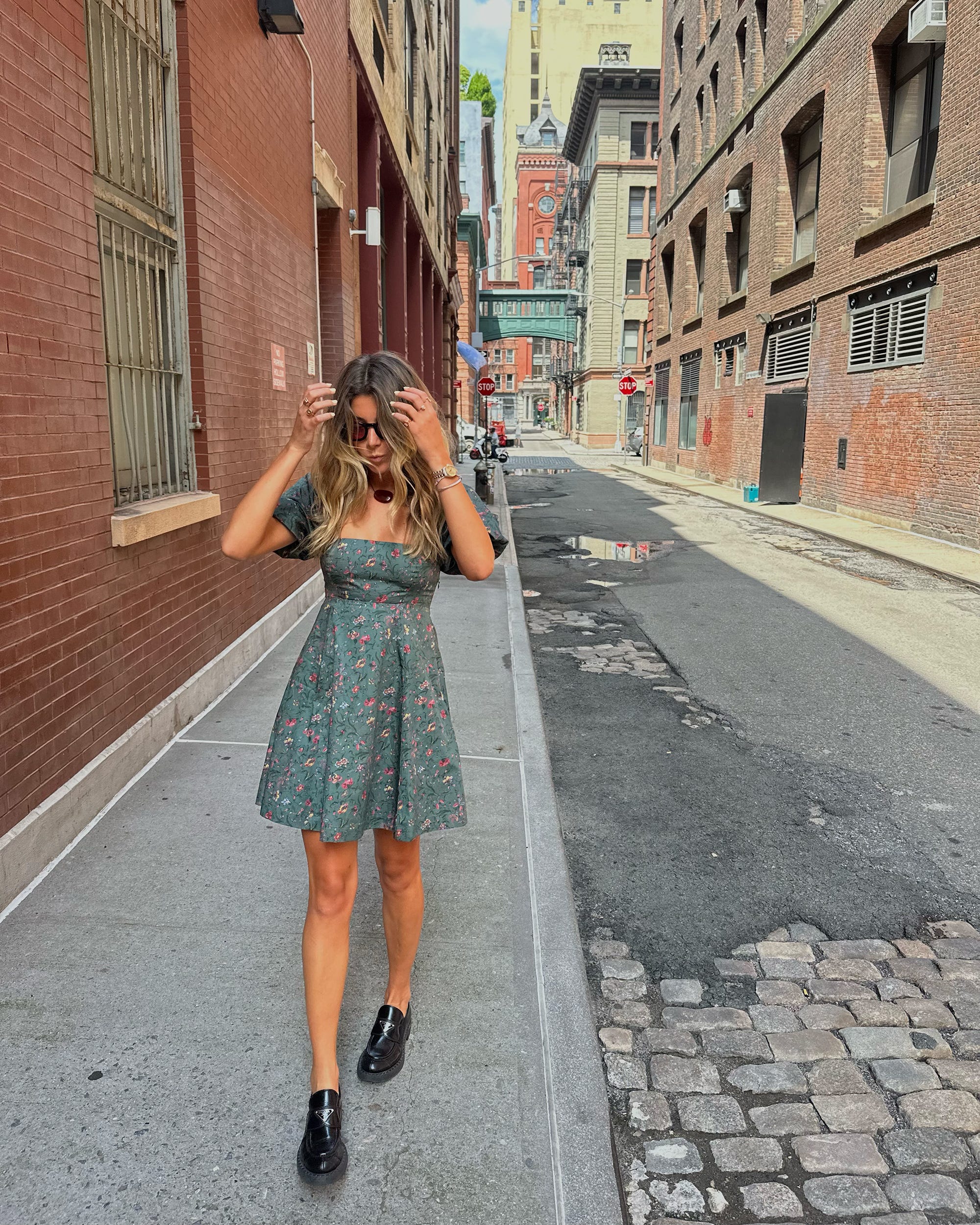In the past five years, you might have noticed an uptick in daytime clothing that looks like sleepwear. Be it sheer slip dresses, bloomers, or even opting to go pantless, looks that would have formerly been reserved for behind closed doors (or between two sheets) have become increasingly popular for working hours. And, while it would be easy to assume that this is only true among the high-fashion set, one item has become a near-ubiquitous workwear staple: the Nap Dress.
Designed by Hill House Home—a millennial-forward yet age-agnostic brand that sells traditionally feminine fashion and home goods—the Nap Dress is, in its most popular form, an A-line midi with a neatly smocked bust and ruffled shoulders. At the onset of the pandemic, it gained notoriety as one of the few garments that corporate employees, newly working from home, were actively buying. The New Yorker called it “a gauzy, brief escape for those who can afford it.” ELLE wrote that the era of the “daytime nightgown” followed the prior commodification of “sleep as a luxury good.”
Four years later, the dress—once seen as a loungewear staple—has lasted longer than anticipated and, perhaps more surprisingly, found an unexpected place of social and sartorial representation: corporate America. On a daily commute or at the office, it’s not hard to find someone wearing one of Hill House’s Nap Dresses, often paired with sneakers or ballet flats.
Anita Chomenko, a social media producer at NBCUniversal, is a Nap Dress loyalist. “I wear one or two to work every week,” she tells ELLE.com. She owns nine in total, as well as three Hill House tops. That’s a lot, but it isn’t entirely uncommon; the average Hill House customer owns between two and three Nap Dresses, while the top 10 percent of its customers own approximately 12, according to the brand’s founder and CEO, Nell Diamond. “I gravitate towards the dress because it’s perfect for just about every occasion,” Chomenko adds. “I wear them to work, on vacation, to brunch, out wine tasting, out for dinner, and running errands.”
Diamond says this hyper-versatility was baked into the dress’s design from the start. “I had the benefit of truly making this dress for myself. As all women do, I live a multifaceted life, and I want products that fit all of those things,” she explains. Prior to launching Hill House, Diamond worked on Wall Street, where getting dressed for work posed a challenge; standard corporate garb felt like a costume. “I had a lot of guilt and shame around the clothing being difficult for me. I remember being so upset about what I was wearing and almost beating myself up. Fashion was such a core part of my identity and continues to be. People do their best work when they feel like themselves.”
A sundress may not have always been a viable option for a professional dress code, but for most women, the work wardrobe gave way to the pandemic. “I’ve definitely noticed a shift in what’s considered ‘office-appropriate’ over the past few years,” says Michelle Belluci, a marketing and merchandising officer at the Italian production company Rubelli and a self-proclaimed Nap Dress fan. “After we all enjoyed the comfort of working from home, the pencil skirts, work trousers, and stilettos we wore felt so restricting. It was a natural evolution to dress more casually upon returning to the office.” Belluci also notes the brand’s wide range of fabrications and prints—cotton, recycled polyester, and tulle in plaids, brocades, and floral designs—as a reason it’s great for a more casual office environment, adding that she can throw on a blazer when she has a business presentation. Alexandra Seeley, a senior training and development specialist in insurance at Johns Hopkins HealthCare Solutions, is drawn to the dress because it’s “so easy to throw on and look put-together.” As a new mother with “few minutes to spare” and a business-casual dress code, the Nap Dress’s one-and-done simplicity is its appeal.
Sara Maggioni, the head of womenswear at the consumer trend forecasting company WGSN, notes that the Nap Dress fits into what she and her colleagues continue to call the “sleep economy,” which they predicted would be on the rise even pre-pandemic. “The millennial generation as a cohort who viewed ‘staying in’ as ‘the new going out’ [existed] way before the pandemic,” she says. “This meant [brands had to prioritize] items that could transition seamlessly between lounging and living, supporting work, rest and play. The pandemic accelerated everything, but the mood and need for that type of product were already present.” With consumers prioritizing wellness over productivity, attitudes towards sleep were shifting, and sleepwear and sleep-inspired fashion were set to boom (though an ever-growing interest in ’90s styles like the slip dress has also had an impact). “This is why the Nap Dress had the success it had,” Maggioni explains. “It spoke to a consumer looking for comfort-driven yet fashion-led, feminine pieces.”
Even bigger than Nap Dress Nation, however, is the meteoric rise of the trad wife, a digital trend and a human archetype who regularly fashions her image in a traditional aesthetic not dissimilar to Hill House’s. Especially celebrated when she elevates her domestic prowess alongside other long-held feminine credentials like beauty and thinness, the trad wife embraces traditional gender roles and turns what was once invisible domestic labor into a performance visible to millions.
But where the trad wife crafts a fantasy, the Nap Dress remains planted in reality. The paradox of the Nap Dress is that its aesthetic appeal is old-fashioned, while the woman who wears it is distinctly modern. She gravitates towards the garment because she wants the convenience of wearing the same thing to morning drop-off, to the office, and then to a post-work event, because she might be expected to do any or all of those things. In that sense, it’s hard to deny the dress’s weekday appeal.
Still, in years to come, we might reflect on the Nap Dress as a trend—an artifact of this moment. But for now, it continues to sustain success because it meets a need. Its lightness and ease, tenets repeated by brand devotees, are especially significant when expectations of women, no matter their place of work, are only increasing. In harsh, unclear times, it’s no surprise that women are reaching for something exacting yet soft, uncomplicated, and made to comfort the wearer herself.

Erica Marrison is a writer and journalist based in New York City. Her work sits at the intersection of culture, fashion, and power, and has appeared in Teen Vogue, People, V Magazine, TODAY, and more.










